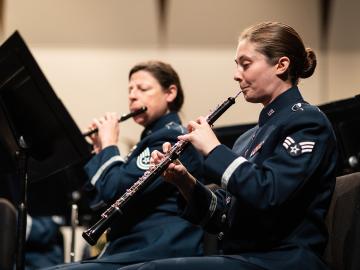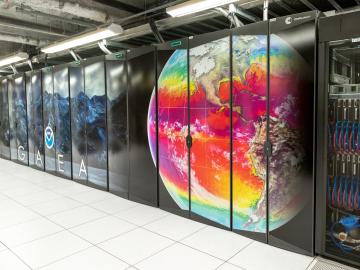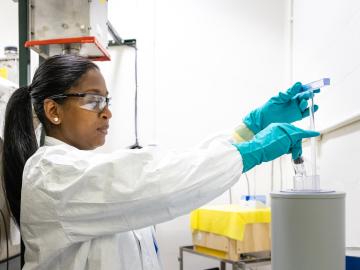
Filter News
Area of Research
News Topics
- (-) Big Data (6)
- (-) Biomedical (3)
- (-) Computer Science (11)
- (-) Cybersecurity (6)
- (-) High-Performance Computing (18)
- (-) Isotopes (7)
- (-) Materials Science (7)
- (-) Mercury (1)
- (-) Neutron Science (19)
- (-) Physics (10)
- (-) Space Exploration (4)
- 3-D Printing/Advanced Manufacturing (6)
- Artificial Intelligence (14)
- Bioenergy (9)
- Biology (16)
- Biotechnology (1)
- Buildings (6)
- Chemical Sciences (10)
- Clean Water (5)
- Composites (2)
- Coronavirus (1)
- Critical Materials (1)
- Emergency (1)
- Energy Storage (7)
- Environment (28)
- Exascale Computing (11)
- Fossil Energy (2)
- Frontier (13)
- Fusion (7)
- Grid (10)
- Hydropower (2)
- Machine Learning (10)
- Materials (21)
- Mathematics (2)
- Microelectronics (2)
- Microscopy (3)
- Nanotechnology (4)
- National Security (15)
- Nuclear Energy (14)
- Partnerships (6)
- Polymers (2)
- Quantum Computing (6)
- Quantum Science (3)
- Security (1)
- Simulation (19)
- Software (1)
- Summit (7)
- Transportation (4)
Media Contacts

Inspired by one of the mysteries of human perception, an ORNL researcher invented a new way to hide sensitive electric grid information from cyberattack: within a constantly changing color palette.

Growing up in suburban Upper East Tennessee, Layla Marshall didn’t see a lot of STEM opportunities for children.
“I like encouraging young people to get involved in the kinds of things I’ve been doing in my career,” said Marshall. “I like seeing the students achieve their goals. It’s fun to watch them get excited about learning new things and teaching the robot to do things that they didn’t know it could do until they tried it.”
Marshall herself has a passion for learning new things.

A trio of new and improved cosmological simulation codes was unveiled in a series of presentations at the annual April Meeting of the American Physical Society in Minneapolis.

Climate change often comes down to how it affects water, whether it’s for drinking, electricity generation, or how flooding affects people and infrastructure. To better understand these impacts, ORNL water resources engineer Sudershan Gangrade is integrating knowledge ranging from large-scale climate projections to local meteorology and hydrology and using high-performance computing to create a holistic view of the future.

Using disinformation to create political instability and battlefield confusion dates back millennia. However, today’s disinformation actors use social media to amplify disinformation that users knowingly or, more often, unknowingly perpetuate. Such disinformation spreads quickly, threatening public health and safety. Indeed, the COVID-19 pandemic and recent global elections have given the world a front-row seat to this form of modern warfare.

Oak Ridge National Laboratory, in partnership with the National Oceanic and Atmospheric Administration, is launching a new supercomputer dedicated to climate science research. The new system is the fifth supercomputer to be installed and run by the National Climate-Computing Research Center at ORNL.

Few things carry the same aura of mystery as dark matter. The name itself radiates secrecy, suggesting something hidden in the shadows of the Universe.

Andrea Delgado is looking for elementary particles that seem so abstract, there appears to be no obvious short-term benefit to her research.

How did we get from stardust to where we are today? That’s the question NASA scientist Andrew Needham has pondered his entire career.

A series of new classes at Pellissippi State Community College will offer students a new career path — and a national laboratory a pipeline of workers who have the skills needed for its own rapidly growing programs.


